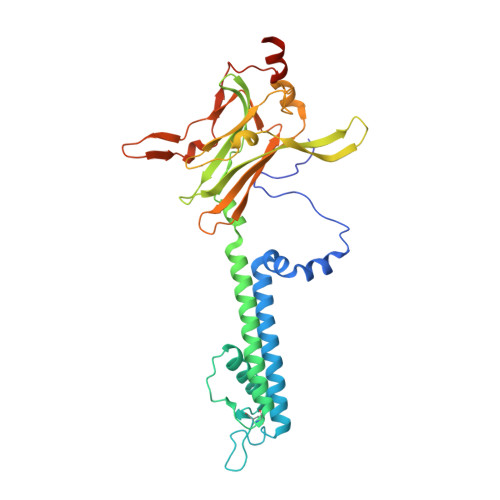Atomistic basis of opening and conduction in mammalian inward rectifier potassium (Kir2.2) channels.
Zangerl-Plessl, E.M., Lee, S.J., Maksaev, G., Bernsteiner, H., Ren, F., Yuan, P., Stary-Weinzinger, A., Nichols, C.G.(2020) J Gen Physiol 152
- PubMed: 31744859
- DOI: https://doi.org/10.1085/jgp.201912422
- Primary Citation of Related Structures:
6M84, 6M85 - PubMed Abstract:
Potassium ion conduction through open potassium channels is essential to control of membrane potentials in all cells. To elucidate the open conformation and hence the mechanism of K+ ion conduction in the classic inward rectifier Kir2.2, we introduced a negative charge (G178D) at the crossing point of the inner helix bundle, the location of ligand-dependent gating. This "forced open" mutation generated channels that were active even in the complete absence of phosphatidylinositol-4,5-bisphosphate (PIP2), an otherwise essential ligand for Kir channel opening. Crystal structures were obtained at a resolution of 3.6 Å without PIP2 bound, or 2.8 Å in complex with PIP2. The latter revealed a slight widening at the helix bundle crossing (HBC) through backbone movement. MD simulations showed that subsequent spontaneous wetting of the pore through the HBC gate region allowed K+ ion movement across the HBC and conduction through the channel. Further simulations reveal atomistic details of the opening process and highlight the role of pore-lining acidic residues in K+ conduction through Kir2 channels.
- Department of Pharmacology and Toxicology, University of Vienna, Vienna, Austria.
Organizational Affiliation:



















